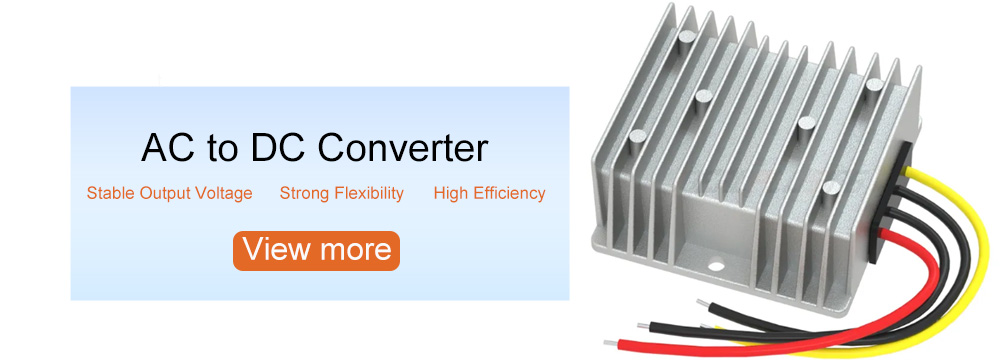AC DC converters provide power to electronic devices that require the conversion process from AC to DC. The various applications of this device may prove beneficial if you do not have access to a nearby DC wall outlet.
However, due to its complex nature, understanding this technology can be confusing and overwhelming. With this in-depth article, you will learn more about what these devices achieve and how they work. At IDEALPLUSING, we provide you with information about ideal applications for AC-DC converters. As a result, you will understand how these converters work and how to use them safely. Everything provided here keeps you on the right track, so keep reading!

1. What is an AC DC Converter?
An AC-DC electronic power supply draws AC voltage from a power source and converts it to a DC output voltage for battery-powered devices. Moreover, the device converts low voltage values, making it ideal for everyday electronics that require either AC or DC output voltage.
Each converter contains a different design, but usually comes with a single or multiple transformers, filters, and rectifiers. In addition, some AC-DC converters have active mode efficiency, which means they consume less energy.
It is important not to confuse this with a DC power adapter. This is because a DC power supply provides a constant current to devices such as circuit boards.
It does not convert AC power to DC voltage. Engineers usually use DC power adapters for testing. DC-DC power supplies are also different from these because it takes power from a battery and converts it to another voltage level.
Typically, you will find two types of AC-DC converters in the market today, linear and switching. Linear is an affordable and simple solution, which loses additional energy in the form of heat, causing problems for applications that cannot function properly at high temperatures.
Switching power supplies are more complex devices that can switch between full on and full off, reducing energy losses. These also provide higher power density for data center, network and server applications.
While lightweight, efficient and smaller, they can generate electrical noise without suppression. The simple design also provides limited power factor. Therefore, power factor correctors help to solve this problem.
2. Working Principle of AC-DC Converter
The integrated transformer alternates the AC voltage, reducing/boosting the voltage level to improve the DC power supply function of the connected device. The conversion process is called rectification and involves the use of a rectifier at the load end connection to convert the AC power to DC. Finally, the filter removes the noise from the AC wave, thus providing smoother energy to the DC power supply circuit.
Usually, the circuit takes different forms but contains the necessary parts. In addition, it also provides one or more conversion stages.
Some devices may also include a cooling fan if the heat sink cannot effectively cool the device. However, some fans take up space, so you should choose the ideal size. Using a fast-spinning cooling fan will ensure that it provides better heat dissipation.
3. AC-DC Converter Applications
Essentially, these devices convert AC power into DC voltage for existing electronic devices in various applications. They come in different forms, including external and internal adapters. Internal adapters consist of electronic devices such as Blu-ray players, medical devices (650W AC-DC power supplies), etc. Meanwhile, external adapters consist of devices such as laptops.
Other application examples include water heaters, fans, vacuum cleaners, TVs, mobile phones, chargers, etc. In addition, telecommunication equipment, industrial machinery (250W AC-DC power supplies), and kitchen appliances with DC motors all use AC-DC power supplies.
In addition, these devices also have overvoltage, overcurrent, and short-circuit protection features to ensure the safety of you and your device.
DC power converters also offer AM radio signal detection.
4. AC-DC Converter Safety Guidelines
Before using the converter, you should take special care to ensure safety. We have discussed some helpful steps you can take:
Contact with the heat sink or housing increases the risk of burns, so you should avoid touching these parts.
Do not touch the input terminals and internal components. Doing so may result in electric shock or burns.
When operating the AC-DC converter, make sure to keep your hands and face at a safe distance. Otherwise, you may end up getting injured if the device malfunctions.
Installing a slow-blow fuse on the input of the converter can also keep it safe during operation.
Conclusion
AC-DC converters are very convenient for everyday electronics. They assure you that your device will receive the correct type of power. In addition, even if the number of components seems complicated, the machine makes the conversion process safe and efficient. Now that you have gained a lot of knowledge on the subject, you should be ready to get started!
If you have any questions about AC-DC converters, feel free to contact us!







